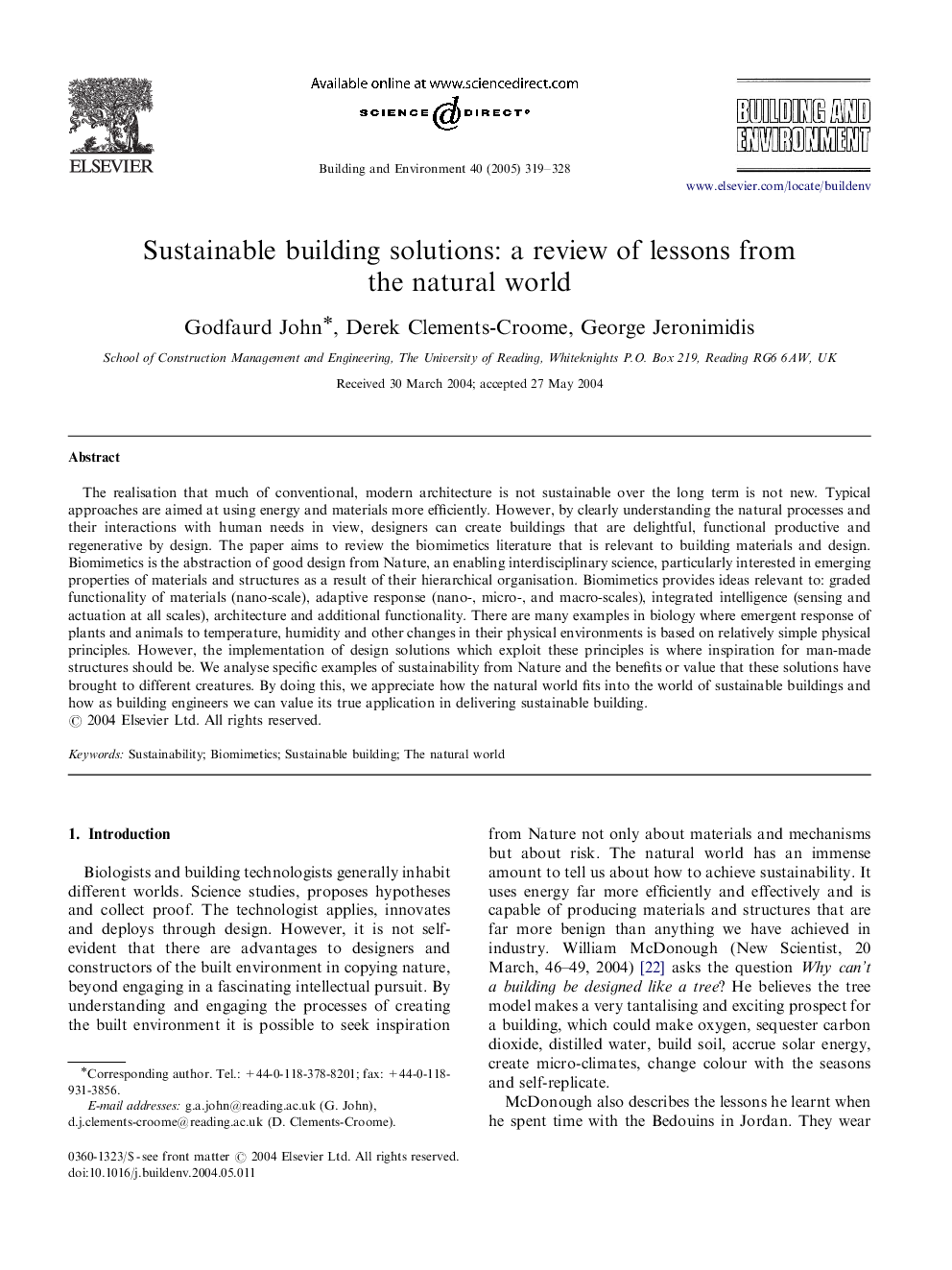| Article ID | Journal | Published Year | Pages | File Type |
|---|---|---|---|---|
| 10283276 | Building and Environment | 2005 | 10 Pages |
Abstract
The realisation that much of conventional, modern architecture is not sustainable over the long term is not new. Typical approaches are aimed at using energy and materials more efficiently. However, by clearly understanding the natural processes and their interactions with human needs in view, designers can create buildings that are delightful, functional productive and regenerative by design. The paper aims to review the biomimetics literature that is relevant to building materials and design. Biomimetics is the abstraction of good design from Nature, an enabling interdisciplinary science, particularly interested in emerging properties of materials and structures as a result of their hierarchical organisation. Biomimetics provides ideas relevant to: graded functionality of materials (nano-scale), adaptive response (nano-, micro-, and macro-scales), integrated intelligence (sensing and actuation at all scales), architecture and additional functionality. There are many examples in biology where emergent response of plants and animals to temperature, humidity and other changes in their physical environments is based on relatively simple physical principles. However, the implementation of design solutions which exploit these principles is where inspiration for man-made structures should be. We analyse specific examples of sustainability from Nature and the benefits or value that these solutions have brought to different creatures. By doing this, we appreciate how the natural world fits into the world of sustainable buildings and how as building engineers we can value its true application in delivering sustainable building.
Related Topics
Physical Sciences and Engineering
Energy
Renewable Energy, Sustainability and the Environment
Authors
Godfaurd John, Derek Clements-Croome, George Jeronimidis,
